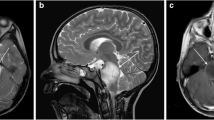Abstract
This paper describes using the rule of 4 of the brainstem to help emergency physicians readily identify patients with brainstem problems. It is a simple set of four rules that demystify the brainstem. It is not designed to discuss patients presenting with coma, of which brainstem problems are only one of the many causes. It will also discuss cerebellar infarction and haemorrhage, because although not strictly part of the rule of 4, these are medical emergencies that can, at times, easily be missed.
Zusammenfassung
In diesem Beitrag wird die Anwendung der 4er-Regel des Hirnstamms beschrieben, die es Ärzten in der Notaufnahme ermöglicht, Patienten mit Störungen am Hirnstamm auf einfache Weise zu identifizieren. Mit ihren vier simplen Teilregeln nimmt sie dieser anatomischen Struktur ihren Schrecken. Es ist nicht der Anspruch dieser Arbeit, die Situation von Patienten im Koma zu erörtern, das neben Störungen am Hirnstamm viele weitere Ursachen haben kann. Diskutiert werden auch Kleinhirninfarkte und -blutungen. Sie sind zwar streng genommen nicht Teil der 4er-Regel, werden aber als medizinische Notfälle leicht übersehen – zumindest in manchen Fällen.




Similar content being viewed by others
References
Gates P (2005) The rule of 4 of the brainstem: a simplified method for understanding brainstem anatomy and brainstem vascular syndromes for the non-neurologist. Intern Med J 35(4):263–266
Gates P (2011) Work out where the problem is in the brainstem using ‘the rule of 4’. Pract Neurol 11(3):167–172
Gates PC (2010) Clinical neurology a primer. Sydney, Australia. Elsevier, pp 403
Gates P (2015) www.understandingneurology.com. P. Gates Creative Force. Geelong, Victoria, Australia
Talley N, O’Connor S (2013) Clinical Examination, a systematic guide to physical examination. Churchill Livingstone Elsevier, Australia, pp 624
Manji H et al (2014) Oxford handbook of neurology. Oxford University Press, Oxford
Kim JS et al (1993) Isolated or predominant ocular motor nerve palsy as a manifestation of brain stem stroke. Stroke 24(4):581–586
Author information
Authors and Affiliations
Corresponding author
Ethics declarations
Conflict of interest
P. Gates states that there are no conflicts of interest.
The accompanying manuscript does not include studies on humans or animals.
Additional information
Supplementary material online:
The translated German full-text version of this article is available at SpringerLink (under supplemental dx.doi.org/10.1007/s10049-015-0040-x).
Rights and permissions
About this article
Cite this article
Gates, P. Recognising brainstem problems in the emergency department using the rule of 4 of the brainstem. Notfall Rettungsmed 18, 364–369 (2015). https://doi.org/10.1007/s10049-015-0034-8
Published:
Issue Date:
DOI: https://doi.org/10.1007/s10049-015-0034-8




